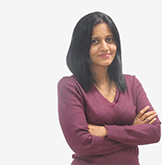Medical tourism is a growing sector in India. In October 2015, India’s medical tourism sector was estimated to be worth Rs 200billion. It is projected to grow to Rs 450 billion by 2020. Foreign patients travelling to India to seek medical treatment in 2012, 2013 and 2014 numbered 171,021, 236,898, and 184,298 respectively. Traditionally, the United States and the United Kingdom have been the largest source countries for medical tourism to India. However, according to a CII-Grant Thornton report released in October 2015, Bangladeshis and Afghans accounted for 34% of foreign patients, the maximum share, primarily due to their close proximity with India and poor healthcare infrastructure. Russia and the Commonwealth of Independent States (CIS) accounted for 30% share of foreign medical tourist arrivals. Other major sources of patients include Africa and the Middle East, particularly the Persian Gulf countries. In 2015, India became the top destination for Russians seeking medical treatment. Chennai, Jalandhar, Kolkata, Mumbai, Hyderabad and the National Capital Region received the highest number of foreign patients primarily from South Eastern countries.
Advantages of medical treatment in India include reduced costs, the availability of latest medical technologies, and a growing compliance on international quality standards, as well as the fact that foreigners are less likely to face a language barrier in India. According to the Confederation of Indian Industries (CII), the primary reason that attracts medical value travel to India is cost-effectiveness, and treatment from accredited facilities at par with developed countries at much lower cost. The Medical Tourism Market Report: 2015 found that India was “one of the lowest cost and highest quality of all medical tourism destinations, it offers wide variety of procedures at about one-tenth the cost of similar procedures in the United States.
Cost
Most estimates found that treatment costs in India start at around one-tenth of the price of comparable treatment in the United States or the United Kingdom. The most popular treatments sought in India by medical tourists are alternative medicine, bone-marrow transplant, cardiac bypass, eye surgery, hip replacement and bariatric surgery. India is known in particular for areas of advanced medicine.
Quality
India has around 30 Joint Commission International (JCI) accredited hospitals. However, for a patient traveling to India, it is important to find the optimal Doctor-Hospital combination. After the patient has been treated, the patient has the option of either recuperating in the hospital or at a paid accommodation nearby. Many hospitals also give the option of continuing the treatment through telemedicine.
Travel
The government has removed visa restrictions on tourist visas that required a two-month gap between consecutive visits for people which is likely to boost medical tourism. A visa-on-arrival scheme for tourists from select countries has been instituted which allows foreign nationals to stay in India for 30 days for medical reasons. As travelling by medical visa is made mandatory, patients needing treatment should obtain a medical visa for their treatment in India. However, govt is also processing patients travelling with other visa to be converted to medical visa as well when foreign patients need medical attention during their stay in India.
Language
Despite India’s diversity of languages, English is an official language and is widely spoken. India, which is fast emerging as a hotspot for medical tourism, a number of hospitals have hired language translators to make patients from Gulf, Russia, African and other countries feel more comfortable while at the same time helping in the facilitation of their treatment.
—
(Source : https://goo.gl/wR9MHi)






